It's Ford Time
Why Ford Should Win The Ev Race

- Ford achieved huge earnings and revenue growth in Q2 2022, showing that the company is gaining momentum from its electric vehicle initiative.
- The good mood around Ford's Q2 results changed after a report mentioned the company would layoff 8,000 workers
- Ford has seen great demand for its two private passenger all electric offerings, causing the company to increase production to meet demand.
- With the average cost of EVs hitting $60,000, Ford has an opportunity to gain EV market share by producing attractive and affordable EVs.
This is Ford’s Time
After a Q2 earnings call where Ford ($F) announced that the company increased earnings by 385% year-over-year during the quarter, and revenue by over 50% year-over-year, the big Mo (momentum) is on Ford’s side. But, rumors of the company laying off 8,000 of its employees has dampened the celebration from the earnings call.
According to a Bloomberg report, Ford has plans to cut jobs from its Ford Blue division, the part of the company that produces gas powered vehicles, in order to fund its electric vehicle division, Ford e.
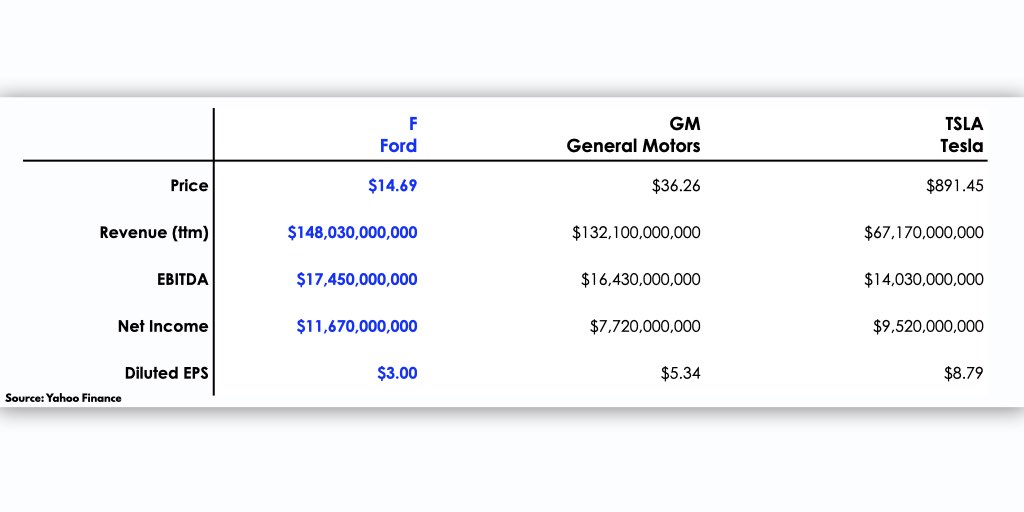
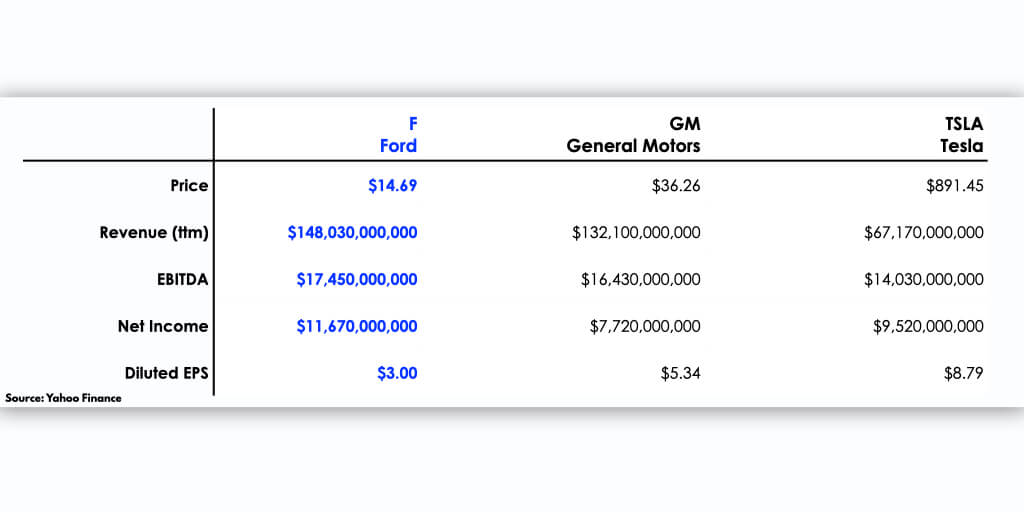
Why it’s Ford’s Time
The five years before covid were tough times for Ford investors. The stock opened 2015 trading at $15.59 per share, and by February 2020, right before the market sell off sparked by COVID-19, the stock traded for $9.18 a share. During that same five year span, the S&P 500 gained 62%.
Over those five years, 2015 to 2020, two things happened consistently with Ford. One, the stock declined, and two, the company paid a dividend every three months. Also in those five years, the company tried to get Wall Street and investors excited with several announcements about its investments into electric vehicle research and production as well as big investments into other areas of the company, but Wall Street and most investors weren’t buying the news or the stock.
But in 2021 things started to change for Ford and its stock price. The company revealed its fully electric Mustang Mach-E, a direct competitor to Tesla’s Model X ($TSLA). Second, Ford revealed their electric F-150, the electric version of the best selling truck in the U.S. The Mach-E went on sale in December of last year and the F-150 Lightning went on sale in April 2022, and there has been high demand for both. In April of this year, Ford stopped taking orders for the Mach-E due to their inability to meet consumer demand. And in December of last year, reservations for the F-150 Lightning surpassed 20,000, causing Ford to update their plans, and increase production of the F-150 Lightning from 55,000 vehicles per year by 2023, to 150,000 a year by 2023. It’s been a long time since Ford has had this level of buzz.
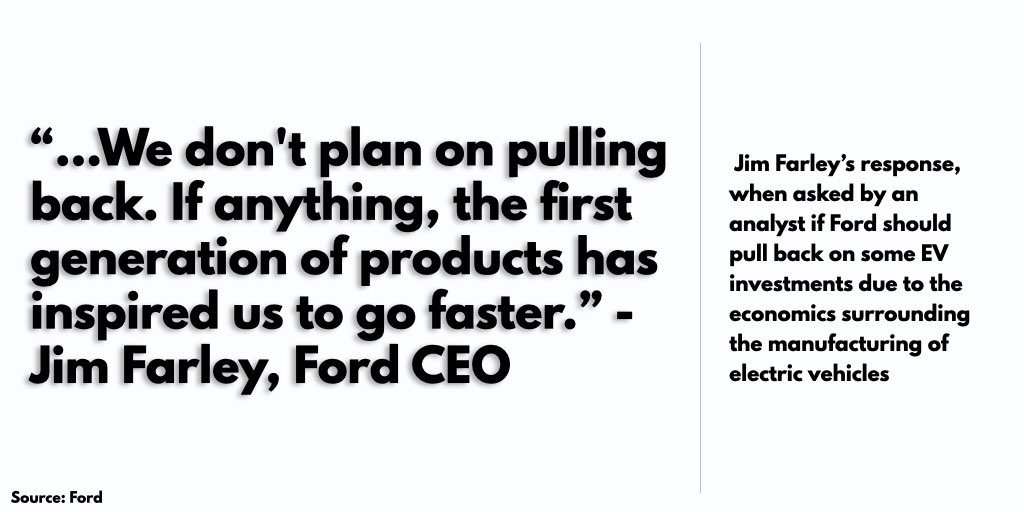
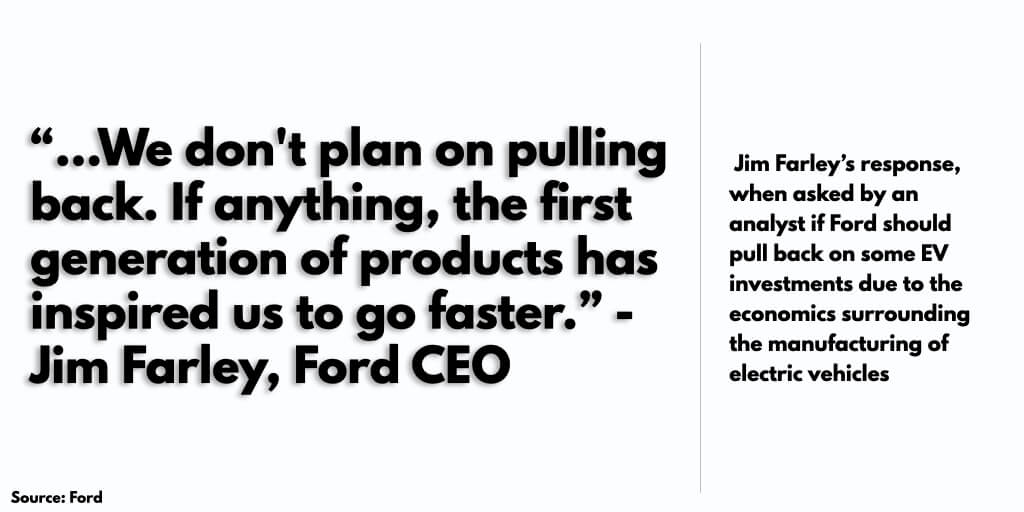
Ford’s Q2 2022 earnings conveyed to Wall Street and retail investors that the company isn’t squandering the momentum it gained from last year. And the layoffs are a sign that the company is shifting its priorities, which is another good sign for investors.
A recent report on the EV market revealed that the average electric vehicle costs $60,000. This is a major barrier for people who want to buy an EV, but who don’t want to own a street legal golf cart (no disrespect to the Chevy Bolt). The base F-150 Lightning starts at $40,000, which is $20,000 less than Rivian’s ($RIVN) basic R1T electric truck. There’s an opportunity for Ford to grab a significant share of the EV market by producing decent looking and affordable electric vehicles, and it appears the company’s management is aware of this.
Issues and Headwinds
Ford's EV ambitions have hit a recent snag. In addition to not having enough supply to meet the demand of the Mustang Mach-E, the company had to recall nearly 50,000 Mach-E vehicles due to a bug in the propulsion system. Sales for the Mach-E have continued, but deliveries of the vehicles have been put on hold. Ford expected to have a fix for the problem by Q3, but a recent tweet by @MachEForum revealed that Ford has found a fix for the issue.
Also, Ford and other vehicle manufacturers are still dealing with a shortage of semiconductors, as well as an increase in material costs and shipping costs due to inflation.
On the consumer side, consumer confidence declined again in July, marking a third straight month of declining consumer confidence. Then there is the big R. Though government officials haven't officially stated that the country is in a recession, it does appear the U.S. is getting closer to one. U.S. GDP fell 0.9% in the second quarter of 2022. It’s the second quarter in a row that GDP has declined, which is a strong signal that the country is heading towards a recession.
Ford’s management expects to see some improvements in commodity prices in the second half of 2022, which should lower material expenses. Ford has been able to increase its vehicle prices to offset higher expenses without issue because of the high demand for vehicles. A recession however, could cause consumers to delay new vehicle purchases, which would be a big blow to the momentum Ford has gathered over the past year.
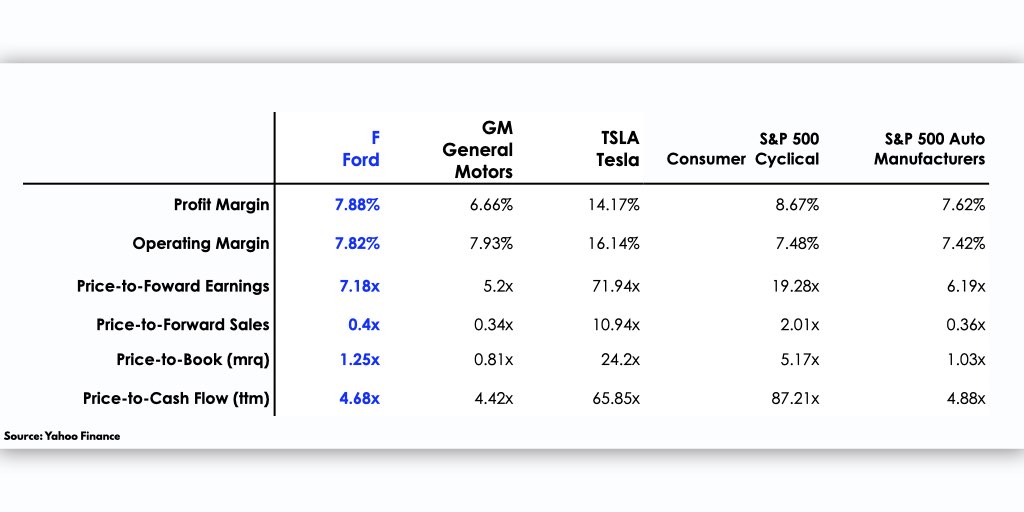
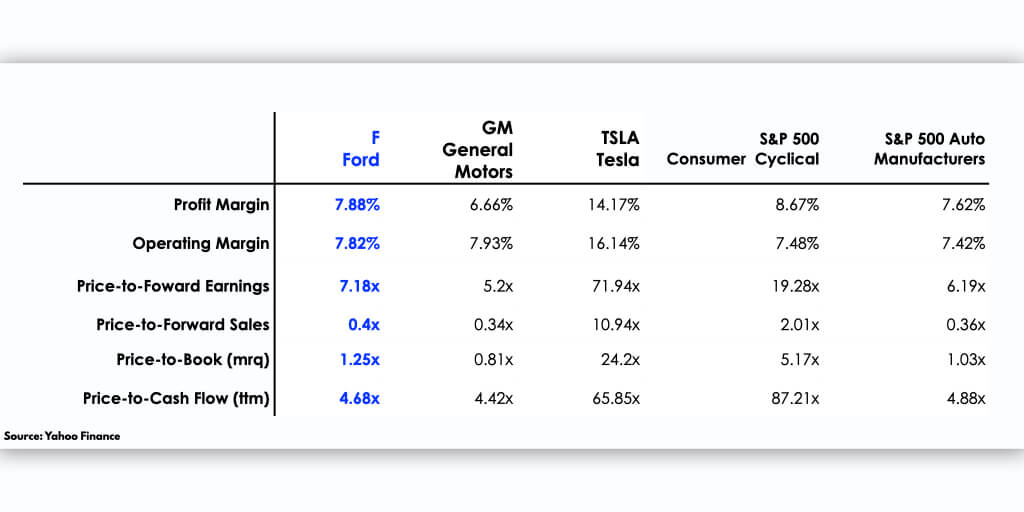 2022 and Beyond
2022 and Beyond
2021 was a great year for long time Ford investors and believers, the stock hit milestones that it hadn’t hit in decades. When the stock traded to over $10 per share last year, it was the first time the stock traded above $10 since 2019. When the stock hit $15 a share, it was another big moment, as the stock hadn’t touched $15 a share since 2015, and when the stock traded to over $20 share in late 2021, it was the first time Ford’s stock had traded above $20 per share since 2001.
But the good times didn’t last for Ford stockholders. For Q4 2021, Ford reported an earnings miss. Earnings per share for the quarter came in at $0.26, missing analyst's estimates by $0.15. The earnings miss accelerated a decline in the stock price that started a month before the earnings release. Ford's stock has been in decline for all of 2022, but recently found a bottom on July 5, 2022, when the stock closed at $11.20 per share. Since July 5, the stock is up 31%.
With momentum on its side from the Q2 2022 earnings reports, and a management team ready to embrace electric vehicles, Ford has the opportunity to reshape how customers and investors view the company. The next five years for Ford, and the Ford e division, could be better than the company’s last 20 years.
The race to put out the first electric truck has been something I’ve been very focused on over the past few years. My thought has been that the company that could produce an electric truck for the crowd that needs trucks - big emphasis on ‘needs trucks’ - would win that market and would win a large share of the business fleet market. Although Rivian was first to market with the R1T, the pre-release branding of the truck made it seem like a truck for weekend warriors, and not for people hauling lawn care equipment or materials to and from a construction site day-to-day.
My opinion on Ford prior to now has been that the company is too bound to the big oil companies to ever take electric vehicles seriously. Although I was pleasantly surprised at the demo versions of the Mach-E and F-150 Lightning when they were revealed, I thought Ford would put both on the back burner and continue to keep their focus on gas powered vehicles. I was wrong. Ford is taking EV production seriously, and their investors should benefit from the company's commitment to EVs.

